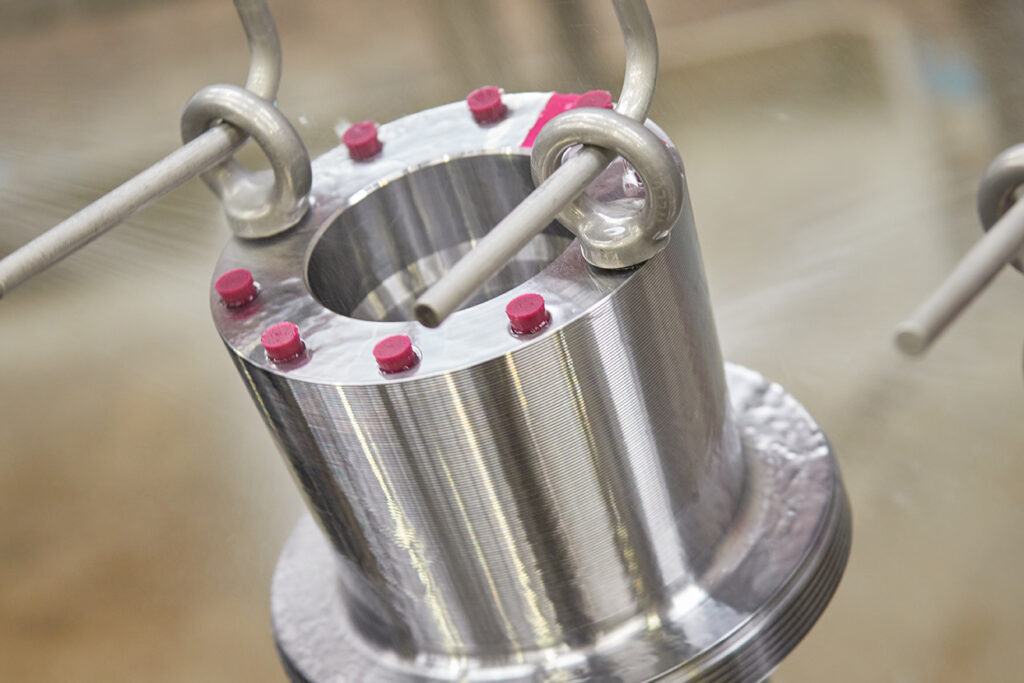ELECTROLESS NICKEL PLATING, WHAT IT IS AND HOW IT CAN BENEFIT YOUR COMPONENTS

Electroless Nickel Plating Technical Manager, Steve Whitehead, gives you the low down on everything you need to know about Electroless Nickel Plating.
Electroless Nickel Plating (or ENP as it is known) is, in a nutshell, an excellent way of enhancing the performance characteristics of a wide variety of components used in all variety of applications and some the most challenging environments known to man. Whether those components are used in medical, electrical, defence, marine, oil & gas, automotive, aerospace or space industries, Electroless Nickel Plating provides numerous benefits from withstanding extremes of temperature, to providing protection from oxidisation, chemicals, radiation, friction, impact, and abrasion.
SO HOW IS ELECTROLESS NICKEL PLATING CARRIED OUT?
After meticulous preparation and cleaning processes, components are placed in a bath consisting of a nickel salt and hypophosphite solution. The base material of the component acts as a catalyst to trigger an ion exchange reaction which results in the gradual deposition of the nickel-phosphorous alloy onto the component. The autocatalytic nature of the process means that the nickel-phosphorous coating reaction continues and is built up over time evenly on all surfaces exposed to the chemistry within the bath. This results in a uniform nickel-phosphorous coating that can be controlled to within a few microns of thickness.
Nickel-Phosphorous coatings are applied to protect the substrate (component) and/or provide enhanced properties such as increased hardness, wear resistance and lubricity, electrical conductivity and extensive corrosion protection.
There are further treatments that can be carried out if enhanced corrosion resistance is required, for example, if the component is to be used in extreme environments. For these applications, we offer Diffused Nickel Plating. For this process a precise heat treatment process is used after the plating to create an interdiffusion layer between the substrate and the nickel-phosphorous coating. This is done to further improve the material’s strength and corrosion resistance and is often specified for demanding subsea applications requiring circa 20-30 years subsea protection.
Another option is Ni-PTFE plating, which is widely used in the automotive, machinery, engineering and mould and die industries. This is a unique plating solution that combines the hardness of electroless nickel with the lubricity of Polytetrafluoreothylene (PTFE). When a component is plated in this way, it provides properties such as low friction, corrosion prevention, extended lifetime, reduces sound made by slides, bearings, or pistons, also gives reliable performance in cryogenic temperatures.
WHAT ARE THE PROPERTIES OFFERED BY ELECTROLESS NICKEL PLATING?
Electroless Nickel Plating has many properties which manufacturers are looking for, the main properties include:
- Hardness
- Wear resistance
- Self-lubricating – ideal in areas where friction & wear are issues.
- Resistance to corrosion.
- Even thickness, regardless of shape.
- Extended lifetime.
- Reduces cost of repair and replacement parts.
- Tight manufacturing tolerances.
- Can be hardened up to 1050 Hv.
- Electrical conductivity
- Electromagnetic Shielding EMI/EMP
- Solderability
As industry faces a greater challenge than ever before, of reducing the environmental impact of its processes, whilst extending lifespan and wear resistance, it is no wonder that Electroless Nickel Plating is rapidly gaining in popularity.
Here at CBE+ we offer a range of pre-and post-plate treatments, to meet customer requirements. If you would like any further information about electroless nickel plating or diffused nickel plating from CBE+, please call us on 01246 529014.
